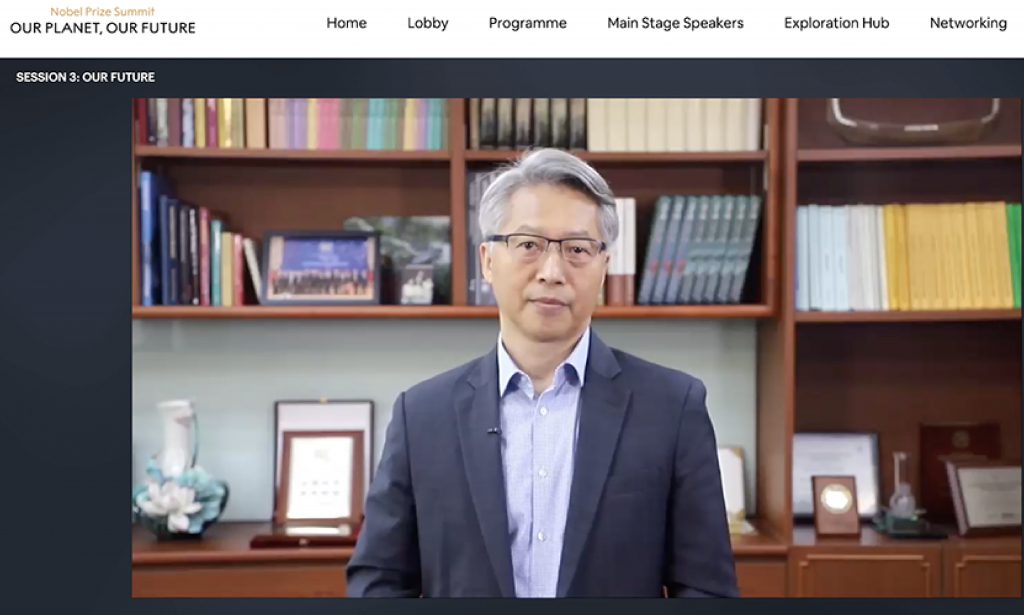
The Nobel Prize Summit is hosted by the Nobel Foundation and organized by the US National Academy of Sciences in partnership with the Potsdam Institute for Climate Impact Research. The first Nobel Prize Summit “Our Planet, Our Future” took place virtually on 26 – 28 April. The meeting brought together Nobel Prize laureates, scientists, policy makers, business leaders, and youth leaders to explore the question: What can be achieved in this decade to put the world on a path to a more sustainable, more prosperous future for all of humanity?
Many world-famous figures (e.g. Al Gore, His Holiness the 14th Dalai Lama) shared and discussed topics such as climate change, biodiversity, economic inequality, technological innovation, and local actions. Additionally, the President of Academia Sinica, James C. Liao put forward incisive insights on the topic of “Hard Problems: Science Solutions”.
President Liao pointed out that the world has begun to promote the goal of Net Zero by 2050. Several key strategies include: technology research and development to improve energy efficiency, infrastructure construction of renewable energy, energy storage and transmission and distribution systems, etc. However, for countries with limited land resources or heavy industrial economies, the development of renewable energy and industrial electrification have their upper limits and difficulties, making it difficult for fossil fuels to be fully replaced. This is also the arduous challenge that we must face in the next 30 years.
For the challenge, President Liao proposed that the key technology to achieve Net Zero is “Carbon Management”, which includes three aspects: 1) carbon capture technology; 2) direct air capture technology; 3) technology to avoid the formation of carbon dioxide (CO2).
In terms of the first two technologies, CO2 is not reactive, so it is necessary to use chemicals at the end of pipe to capture CO2. In addition, CO2 in the air is very thin, adding to the difficulty in capture CO2 from the air. So far, the most effective method to capture and utilize CO2 is through photosynthesis, but unfortunately, it’s not fast enough. Moreover, if we successfully capture a large amount of CO2, we still need to face the next challenge: How to store and utilize the CO2? As a result, we need to use a combination of physical, chemical and biological techniques in order to develop a next-generation technology, converting CO2 to other chemicals, materials and fuels before it can be effectively reused.
The last aspect requires the development of new technology to separate carbon before the burning of fossil fuels to avoid the formation of CO2. For example: one can develop efficient catalyst to decompose methane which is the major component in nature gas to hydrogen and carbon. Hydrogen can be used to generate energy while carbon can be stored away.
Finally, President Liao appealed that these innovative technologies not only require a large investment in research, development and deployment, to reduce costs and reach the stage of commercial operation, but also require efforts from scientists, engineers and rest of the society in the world, working diligently and cooperatively both to realize existing ideas and generate new ones.
